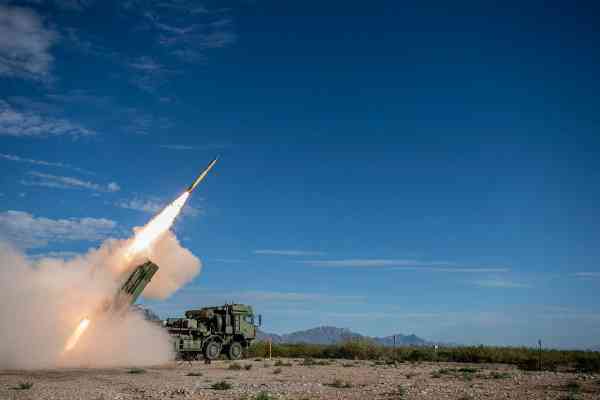April 2nd, 2025 | 07:00 CEST
RENK – The armaments hype is waning. First Phosphate and Volkswagen are taking advantage of the upswing in electromobility!
The demand for armaments stocks is waning. Despite record orders for tank transmissions from the RENK Group and global security investments, the defense boom is flattening out - partly because these stocks have become fundamentally expensive. At the same time, electromobility is gathering pace: The EU predicts a 38% increase in the number of electric vehicles registered in 2025, driven by Germany's planned tax breaks and subsidies for hybrids. This surge requires raw materials to produce lithium iron phosphate batteries, which is where First Phosphate comes into play. Meanwhile, Volkswagen is currently exploring the production of military vehicles, but is also pushing into the market with new electric vehicles and charging systems. Investments for the future should flow into green technologies, not tank production.
time to read: 4 minutes
|
Author:
Armin Schulz
ISIN:
RENK AG O.N. | DE000RENK730 , FIRST PHOSPHATE CORP | CA33611D1033 , VOLKSWAGEN AG VZO O.N. | DE0007664039
Table of contents:

"[...] We know exactly what we are doing and are implementing what we consider to be a proven technology in an industrially applicable and scalable way. [...]" Uwe Ahrens, Director, Altech Advanced Materials AG
Author
Armin Schulz
Born in Mönchengladbach, he studied business administration in the Netherlands. In the course of his studies he came into contact with the stock exchange for the first time. He has more than 25 years of experience in stock market business.
Tag cloud
Shares cloud
RENK - Between growth frenzy and valuation doubts
The RENK Group, a specialist in propulsion technology for defense and industry, has recently delivered impressive figures. In 2024, revenue grew by 23% to EUR 1.14 billion, driven by the Vehicle Mobility Solutions segment, which grew by 32%. The order backlog of EUR 5 billion and the guidance for 2025, which assumes revenue of EUR 1.3 billion and EBIT of up to EUR 235 million, underscore the momentum thesis. In the long term, the Company aims for EUR 2 billion in revenue by 2028. However, the current share price of EUR 43.00 already seems to price in these successes – the price-to-earnings ratio (P/E) of over 80 exceeds the industry average many times over.
Analysts are critical of the high valuation. The fair P/E ratio would be around 24x, suggesting an intrinsic value of around EUR 32 per share, a good 24% below the current level. RENK also appears overpriced compared to its competitors. In addition, the weak return on equity of 5.3% despite high debt, with the current leverage ratio at 1.38, reveals structural weaknesses. The current market capitalization thus reflects not only growth hopes but also speculative euphoria.
RENK's strength, the highly specialized production of tank transmissions and marine propulsion systems, is becoming a risk. The 14 production sites can hardly be scaled up at short notice. Rising defense budgets could drive demand beyond capacity limits. Although major orders such as the Leopard 2 tank secure capacity utilization, a bottleneck could occur if the Company does not expand. For investors, the question remains: Can RENK fulfill the expectations priced into the share price? RENK's operating performance is convincing, but the share price seems overhyped. Caution is advised.
First Phosphate – A key project with robust figures
First Phosphate is vigorously pursuing its strategic projects in Québec. With investment costs of around USD 459 million and a forecast internal rate of return of 37.1% before taxes, the planned Bégin-Lamarche phosphate mine could become the economic backbone for the next 23 years**. The Company is preparing to launch a feasibility study, accompanied by long-term offtake agreements independent of current trade tariffs. In parallel, contracts have been signed for a phosphoric acid plant with a capacity of 190,000 tonnes per year, backed by technical support from Ballestra S.p.A.. Estimated construction costs of USD 175 million are offset by potential annual revenues of CAD 284 million. Also in the planning stage is the First Saguenay iron phosphate plant, which is expected to scale up production from 2026. Ultion Technologies sees an annual revenue potential of USD 53 million here, with capital costs of USD 76 million.
The key to success lies in vertical integration. The cooperation with GKN Hoeganaes ensures the supply of iron powder and enables the use of magnetite from the mine as a raw material – a cycle that promises cost efficiency. In addition, First Phosphate is flexible. Should there be any customs problems, alternative US locations are planned as a backup. The secured offtake agreements for all three projects highlight strong market acceptance. Noteworthy: The Company is seeking financial participation from the Pekuakamiulnuatsh First Nation, which not only strengthens local engagement but also aligns with ESG criteria.
Management is sending confidence-building signals. Since the beginning of the year, directors and the CEO have purchased over CAD 320,000 in shares. Particularly noteworthy is the compensation policy – management receives 80% of their compensation as restricted share units, and the board of directors receives as much as 100%. This link to corporate success is a positive sign for investors. With the appointment of Armand MacKenzie as President and David Dufour as Senior Vice President, expertise in indigenous cooperation and team leadership is also being combined. In a volatile commodity sector, First Phosphate is positioning itself as a key partner for the lithium iron phosphate battery industry.
Volkswagen – Between battery innovation and realignment
Volkswagen focuses on lithium iron phosphate (LFP) batteries in the entry-level segment. The technology is convincing due to lower costs, longer durability, and higher safety – despite lower energy density. This is a strategic lever for price-sensitive markets such as China. From 2027, the EUR 20,000 ID.EVERY1 model is set to shape mass mobility. At the same time, the Company is pushing ahead with solid-state batteries that could revolutionize ranges and charging times. Government funding, including tax breaks and subsidies for electric vehicles and charging infrastructure, could further stimulate demand. That would give them a clear competitive advantage over Chinese manufacturers.
In addition to e-mobility, Volkswagen is looking into entering the defense industry. The plant in Osnabrück could produce armored vehicles for Rheinmetall in the future to utilize overcapacity. German vehicle exports have halved since 2019, driven by Chinese competition and electrification costs. At the same time, US tariffs of 25% are weighing on business, with models from Mexico and Europe being particularly affected. Although VW plans to invest billions in North American plants, there is a short-term threat of pressure on margins or a decline in sales.
2024 marked a dry spell. Operating profit fell by 15% to EUR 19.1 billion, and the dividend was cut by 30%. High fixed costs, weak demand in China, and restructuring costs are to blame. However, the Company forecasts a revenue increase of up to 5% and an operating margin of 5.5-6.5% for 2025. The decisive factor will be whether the planned EUR 15 billion investment in North America will cushion the impact of tariffs and whether e-mobility remains profitable thanks to government incentives. For investors, the question remains: Can VW manage the balancing act between innovation, geopolitical adaptation, and cost discipline? One share currently costs EUR 93.24.
RENK Group is showing operational strength through record orders in the defense sector, but excessive valuation on a P/E basis and structural weaknesses call for caution. First Phosphate is establishing itself as a key player in lithium iron phosphate batteries – with exciting projects in Québec, vertical integration, and ESG commitment. Volkswagen is focusing on e-mobility through LFP batteries and solid-state technology but is struggling with margin pressure, US tariffs, and the balancing act between defense expansion and electrification costs.
Conflict of interest
Pursuant to §85 of the German Securities Trading Act (WpHG), we point out that Apaton Finance GmbH as well as partners, authors or employees of Apaton Finance GmbH (hereinafter referred to as "Relevant Persons") may hold shares or other financial instruments of the aforementioned companies in the future or may bet on rising or falling prices and thus a conflict of interest may arise in the future. The Relevant Persons reserve the right to buy or sell shares or other financial instruments of the Company at any time (hereinafter each a "Transaction"). Transactions may, under certain circumstances, influence the respective price of the shares or other financial instruments of the Company.
In addition, Apaton Finance GmbH is active in the context of the preparation and publication of the reporting in paid contractual relationships.
For this reason, there is a concrete conflict of interest.
The above information on existing conflicts of interest applies to all types and forms of publication used by Apaton Finance GmbH for publications on companies.
Risk notice
Apaton Finance GmbH offers editors, agencies and companies the opportunity to publish commentaries, interviews, summaries, news and the like on news.financial. These contents are exclusively for the information of the readers and do not represent any call to action or recommendations, neither explicitly nor implicitly they are to be understood as an assurance of possible price developments. The contents do not replace individual expert investment advice and do not constitute an offer to sell the discussed share(s) or other financial instruments, nor an invitation to buy or sell such.
The content is expressly not a financial analysis, but a journalistic or advertising text. Readers or users who make investment decisions or carry out transactions on the basis of the information provided here do so entirely at their own risk. No contractual relationship is established between Apaton Finance GmbH and its readers or the users of its offers, as our information only refers to the company and not to the investment decision of the reader or user.
The acquisition of financial instruments involves high risks, which can lead to the total loss of the invested capital. The information published by Apaton Finance GmbH and its authors is based on careful research. Nevertheless, no liability is assumed for financial losses or a content-related guarantee for the topicality, correctness, appropriateness and completeness of the content provided here. Please also note our Terms of use.




